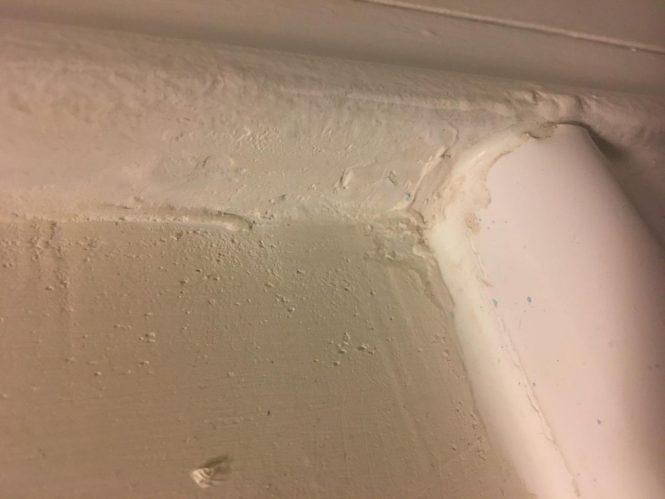

Fixing empty wall issues is a common concern for homeowners looking to enhance their living spaces. From adding a decorative feature to creating a functional storage solution, empty walls often present a blank canvas for creativity and personalization. Addressing these issues can significantly improve the overall aesthetic and functionality of a room, breathing new life into an otherwise uninspired design. This comprehensive guide dives deep into various methods for fixing empty wall issues, from simple repairs to major renovations. We’ll explore the root causes of empty wall problems, discuss various solutions, and provide actionable steps to ensure a successful outcome. This article will follow a structured approach, starting with the initial problem analysis and moving through different solutions.
Understanding the Root Causes of Empty Wall Issues
Identifying the Underlying Problem
Addressing empty wall issues begins with identifying the root cause. Often, the problem isn’t just about the wall itself, but about the surrounding elements that influence the wall’s aesthetic or function. Is the wall damaged? Is there a structural issue that requires attention? Or is it merely a lack of inspiration that’s creating the perceived emptiness? Understanding the specific concern helps determine the right solution.
Common Causes of Empty Wall Issues
Some frequent causes of empty wall issues include: damaged drywall, uneven surfaces, improper paint application, poorly fitted or damaged trims, or insufficient lighting. For example, outdated or improper lighting can make a room appear more empty, or a damaged trim can distract from the aesthetic of the wall. In some cases, the issue might be the lack of a clear design plan, which can lead to an empty wall feeling. Identifying these underlying issues is crucial for effective solutions.
Choosing the Right Solution for Empty Wall Issues
Simple Repairs for Minor Issues
Many empty wall problems can be resolved through straightforward repairs. For example, minor drywall damage can be repaired using patching compounds and sandpaper, while simple trims can easily be replaced. If the issue is related to lighting or a lack of inspiration, a simple change like adding a new decorative wall piece or lighting fixture might be sufficient.
Major Renovations for Significant Issues
More significant issues, such as structural damage or extensive wall damage, may necessitate more complex solutions. These include demolishing and rebuilding the wall, installing new drywall, or replacing the entire trim. Careful planning and execution are critical for successful renovations.
Implementing Effective Solutions
Preparing the Wall for Repair
Before initiating any repair or renovation, thoroughly prepare the wall area. This includes cleaning the surface, patching holes or cracks in the wall, and ensuring the wall is primed and ready for the next step. Consider the wall’s current condition—if it has noticeable damage or imperfections, address those before proceeding with any additional steps.
Installing New Drywall
If replacing drywall is necessary, follow the proper installation procedure to ensure a smooth and aesthetically pleasing result. Ensure all seams are properly taped and mudded for a seamless finish. This requires precision and attention to detail to avoid further issues.
Enhancing the Aesthetic Appeal of Empty Walls
Selecting the Right Wall Decor
From art to mirrors to shelving, the right wall decor can dramatically enhance an empty wall’s aesthetic. Consider the room’s overall style and color scheme when selecting pieces. This ensures consistency and cohesion in the design scheme. Consider incorporating wall hangings, artwork, mirrors, and plants to personalize and elevate the space. When selecting decorative elements, consider the size and scale of the wall.
Integrating Functional Elements
Empty walls can easily incorporate functional elements. Built-in shelves or floating shelves can provide extra storage space. Open shelving can be a great way to display decorative items or store books, creating a visually interesting and practical space.
Safety Considerations During the Fixing Process
Adhering to Safety Protocols
When working with tools and materials, always prioritize safety. Wear safety glasses, gloves, and other protective gear as needed. Always consult with a professional when dealing with structural damage and issues outside of your skill set.
Managing Dust and Debris
Dust and debris are often a byproduct of wall repairs. Implement measures to manage dust and debris effectively, such as covering floors and using dust masks. Thoroughly clean the work area after finishing the repair to avoid any further issues.
Frequently Asked Questions about Fixing Empty Wall Issues
Q: What are the different ways to fix a damaged drywall wall?
A: Fixing a damaged drywall wall often involves patching the hole, priming and painting the area, and then filling in the damage using drywall compound. For larger repairs, it might be necessary to cut out the damaged section and install a new piece of drywall. The specific steps will depend on the extent of the damage. Before proceeding, refer to a guide on drywall patching. Many online resources and tutorials are available.
Q: How can I prevent empty walls from looking too plain?
A: To prevent empty walls from appearing plain, consider using decorative elements like wall hangings, artwork, mirrors, or sculptures. Experiment with different colors, textures, and styles to create a visually appealing and personalized space. Look for inspiration from interior design magazines and websites. Think about the functionality and style of the room when selecting decorative items. Adding lighting and other decorative elements can create a more interesting environment.
In conclusion, fixing empty wall issues requires a systematic approach. By understanding the root cause, choosing the right solution, and following proper installation methods, you can transform an empty wall into a functional and aesthetically pleasing space. Remember to prioritize safety and quality throughout the process. If you’re still unsure about any aspect of the project, consulting with a professional is always recommended. Ready to tackle your empty wall project? Click here for our comprehensive guide and resources!.